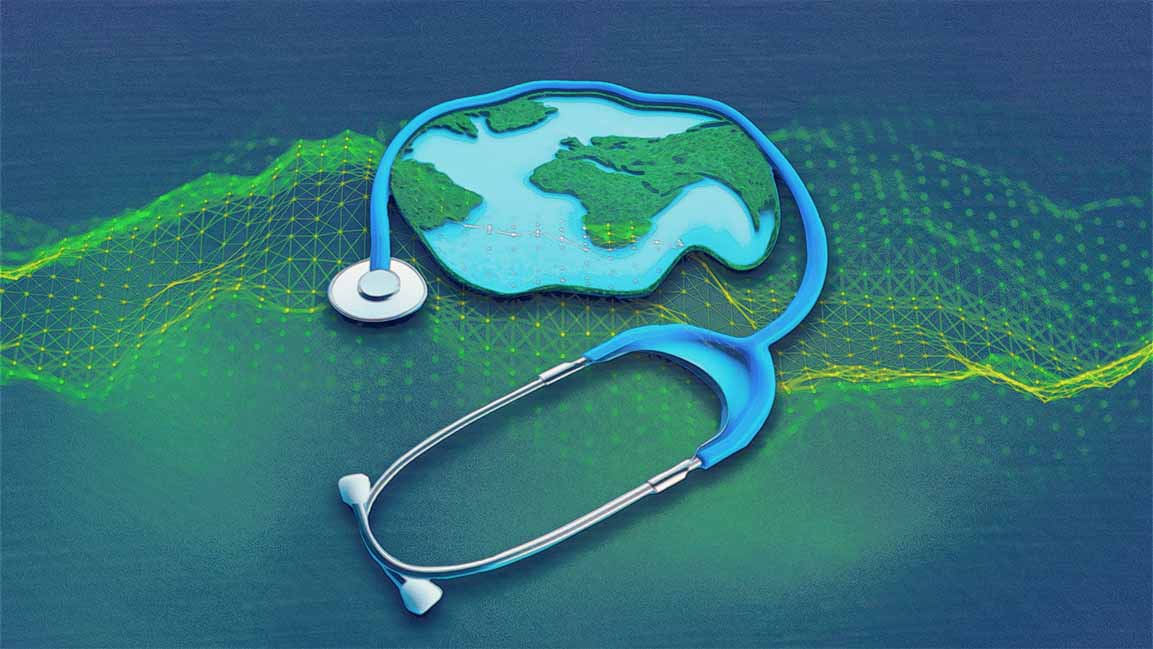- | 3:00 pm
Is sustainable digitalization the future of healthcare?
Can sustainable practices reduce healthcare's carbon footprint?

Innovations in healthcare, particularly in the last few years, have been rapid. From virtual doctor consultations to AI in diagnostics to genetic analysis to 3D-bioprinting. It’s been a paradigm shift.
But while these innovations in healthcare are transformative, they also focus on one crucial aspect: sustainability.
As healthcare propels into the future, the goal is to ensure long-term health benefits for individuals and to embrace an eco-friendly approach towards our planet.
“Over a decade ago, recognizing broader societal responsibilities, we initiated a journey to embed sustainability at every level of our operations. What began with product requirements for software development evolved into a comprehensive strategy leveraging digital technology for sustainability ambitions”, says Robert Metzke, Global Head of Sustainability at Philips.
DIGITAL HEALTH TECH IMPACT
The transformative impact of digital technology on various aspects of human life extends to healthcare, offering new opportunities for care delivery. This trend has seen a substantial uptick, especially post-COVID, as health-conscious consumers and health systems turn to technology to save the day.
However, making healthcare accessible should not imply doubling its global environmental footprint, which already ranks as the 5th-largest emitter globally, believes Metzke.
He says, “Digitalization emerges as a key strategy to reduce healthcare’s environmental impact by enhancing resource efficiency, supporting virtual care, and enabling circular service models.”
It offers significant scope to improve care delivery, benefiting patients, clinicians, and administrators, and holds the potential to reduce the environmental impact of healthcare.
Realizing this potential requires the intentional design of digital systems to advance sustainable development. For Metzke, collaboration within the ecosystem, including care providers, practitioners, knowledge partners, and suppliers, is crucial to harnessing the full potential of digitalization in advancing sustainability.
However, healthcare providers face escalating pressure due to an aging population, rising chronic diseases, and evolving payment models. The digital era offers both challenges and opportunities in navigating these complexities.
Metzke says, “At Philips, our vision for the future of healthcare delivery is rooted in a connected and highly accessible network of virtual and in-person care.”
Artificial intelligence optimizes workflows, enhancing operational efficiency and reducing administrative burdens in healthcare. This shift, including telehealth and remote patient monitoring, not only improves health outcomes but also promotes environmentally conscious practices by lowering the carbon footprint associated with travel.
Philips actively tackles environmental challenges by designing solutions for sustainability. “our real-time telemedicine software, Collaboration Live, not only enhances inclusivity by providing remote access to clinical expertise but also contributes to reducing travel-related emissions,” added Metzke.
CIRCULAR HEALTHCARE FOR SUSTAINABILITY
Circular design is foundational to our endeavors, says Metzke.
Achieving circular healthcare isn’t a distant goal for Philips but an active journey for 2025. It involves generating 25% of revenue from circular products, services, and solutions, signaling a paradigm shift from traditional product-centric models.
“Our commitment involves generating 25% of revenue from circular products, services, and solutions, signaling a paradigm shift from traditional product-centric models. Circular design is at the forefront, emphasizing longevity, reusability, and responsible end-of-life practices. Circular practices are embedded in our sites, minimizing waste and fostering a circular economy within our operational footprint,” adds Metzke.
Regarding sustainability, the goal at Philips isn’t an afterthought but a core consideration in the innovation process.
The goal extends beyond immediate operations, achieving carbon neutrality since 2020 and surpassing the 2025 goal of 75% renewable energy usage in 2021. For the company, collaboration is integral, involving customers, suppliers, and industry peers. “By innovating together, we aim to find solutions that enhance care quality, efficiency, and responsible use of Earth’s resources.”
Looking forward, Philips aspires to regenerative innovation and design and contribute to environmental restoration.
THE ROAD AHEAD
Philips collaborates in healthcare to maximize digitalization benefits while minimizing its ecological footprint. This commitment extends to contributing to the UAE’s energy transition. Philips believes digitalization enhances global healthcare access, promoting sustainable models. Metzke emphasizes the potential of digital technology in redesigning care delivery for improved access and alignment with dematerialization goals.
“By leveraging digital technology responsibly, we aim to contribute to a more sustainable and environmentally conscious future for healthcare.”
































